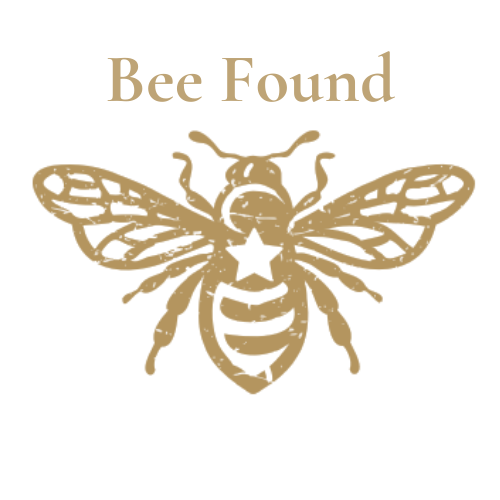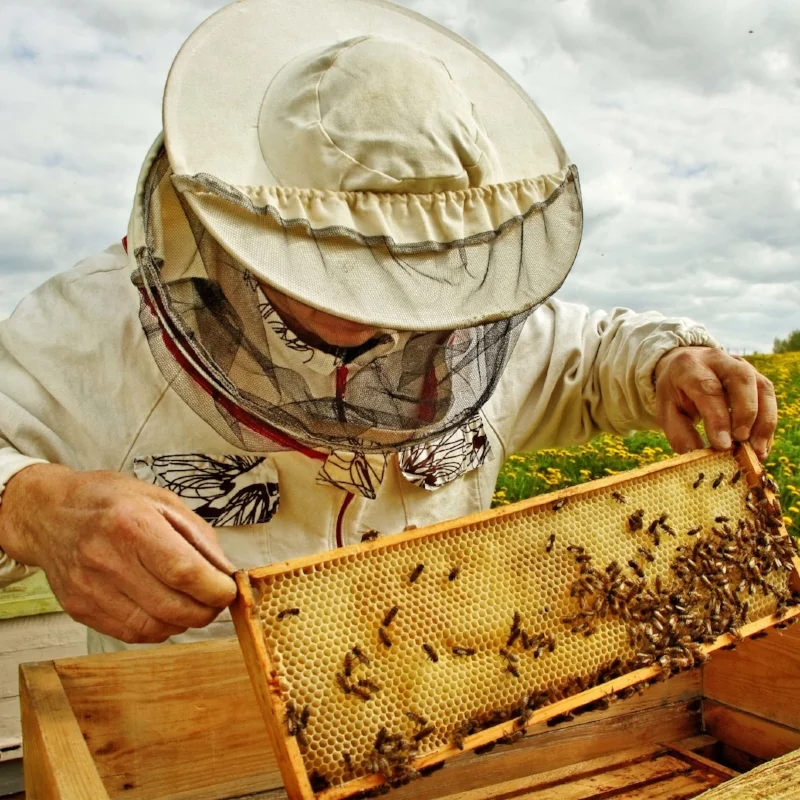Essential Equipment
Every beekeeper, novice or experienced, needs a few select items to help them manage our friends. Here are a few of the essentials.
Hive tool
This is your most critical piece of equipment. A hive tool allows you to detach comb from hive sides, cut and scrape propolis, and pry frames. There are many different types of hive tools and some beeks use different tools for different types of hives. But almost anything with a sharp blade and can pry will work. The most common one for new beekeepers to use is the J-tool, shown left. Hive tools generally come in 7 and 10-inch varieties. If possible, before purchasing, see how the tool fits in your hand, and buy the one you are most comfortable with. Although it may not seem like an issue, the color of your hive tool may be important. If possible, purchase a brightly colored hive tool or paint it such. We recommend this one.
If you need help picking out what type of hive tool to get, Bee Culture has a great article on the different types and history of hive tools.
Smoker
Another very important tool, the smoker makes the bees more docile as they they think there is a wildfire nearby and thus, fill up on honey in case they need to find a new home. When their abdomens are full, the have a much harder time lifting it up to sting.
Smoke also masks the alarm pheromone given off by guard bees, minimizing the defensive reactions of the colony. This is why, when/if you get stung, after scraping off the stinger, blow some smoke on your sting area to mask the pheromone.
We like this one for first time beekeepers.
Additionally, you can get entire kits that has everything you’ll need to get started.
Frame inspection. Notice he's not wearing gloves!
protective gear
A protective jacket and veil is the first thing people think of when they think of beekeepers. It's also one of the most important if you don't want to get stung. Bees have an instinct to sting the face of mammals first. They have CO2 receptors on their antennae, which allows them to detect exhalations, and respond aggressively. But if you're calm, the bees will be calm. That's why some experienced beeks don't even use protective equipment.
Gloves are a personal preference. Having gloves will protect you, but it also makes your hands more bulky which reduces dexterity and may cause some bees to get squished when working. Most experienced beeks forgo gloves altogether.
Bee venom, despite the pain, is actually good for you. Some people get bee venom shots to help with rheumatoid arthritis, nerve pain (neuralgia), multiple sclerosis (MS), reducing the reaction to bee stings in people who are allergic (desensitization) to them (venom immunotherapy), swollen tendons (tendonitis), and muscle conditions such as fibromyositis and enthesitis.
Getting repeated and controlled injections of bee venom under the skin or getting regular bee stings causes the immune system to get used to bee venom, and helps reduce the severity of an allergy to bee venom.
Some beeks even harvest bee venom for this very use. The founder of Divine Api-Logics discovered the benefits of apitherapy as he was going through chemotherapy and noticed how remarkable he felt after getting stung while working his hives one day. He created Bee Well cream which helps with the above symptoms.
books
There is quite a lot of information to consume when reading about bees. But for new beekeepers, it's a good idea to start with the basics. Here are some of our favorites.
For beginners we recommend:
For more experienced beekeepers we recommend:
Honeybee Democracy This is a really fun book to read and it shows how amazing our little friends can bee.
The Buzz About Bees: Biology of a Superorganism We LOVE this book. So much great information! A little pricey, but SO worth it!
All of these link to Amazon. Since you're going there anyway, why don't you add Bee Found as your charity of choice on Amazon Smile? .5% of your purchase will go towards happier healthier bees!



